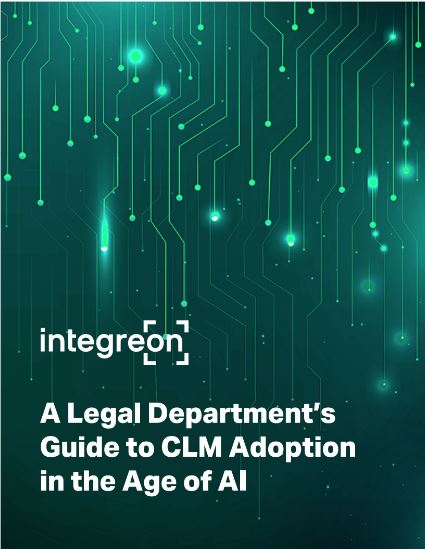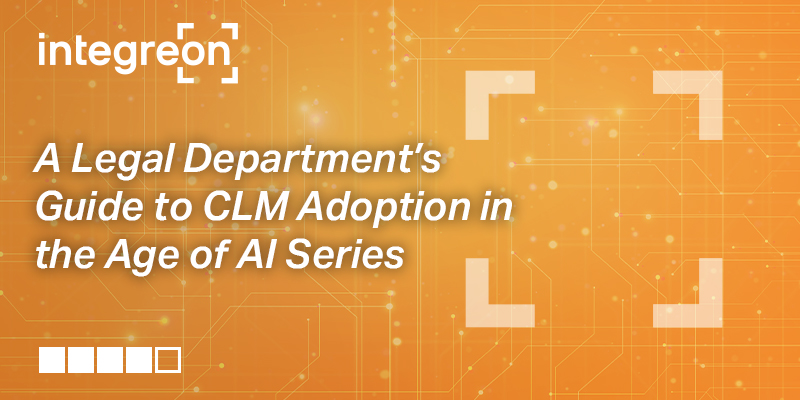This is the final blog of a five-part series on CLM Adoption in the Age of AI. Read the first blog here.
Typical best practices around clearly defining roles and scope and managing change are always applicable when implementing any technology. Adding generative AI (genAI) to CLM technology mix raises the importance of additional key actions, especially when it comes to maximizing the value of your tech investment.
Data Migration
While genAI powered CLM tools can be powerful, starting with clean, well-structured data helps those tools work more effectively. The most successful implementations occur when you take the time and effort to tag and categorize contract data (by jurisdiction, etc.) to enable accurate sorting and analysis, and ultimately, for accurate AI training. Tip: it will save a lot of time and energy over the short and long term if you standardize naming conventions across functions and departments upfront.
System Design
Simplicity is best and less is more should be your guiding principles when designing your initial CLM system workflows. Start with out-of-the-box capabilities and stick to basic configurations when starting out. No matter how tempting it may be to mirror your existing environment, it is worth leveraging the tool’s core approach to make sure all features, and particularly any native genAI, will work as expected. Avoid customization that could interfere with system support or adoption of future system releases from your vendor.
Product Vernacular
All CLM vendors have their own preferred nomenclature, and it will rarely align with the terminology your team currently uses to talk about contracts and processes. When working with a new vendor, be prepared to learn their language from the start. Using the same references for various actions or system capabilities avoids misunderstandings. . It is a worthwhile investment in the vendor relationship and supports an efficient deployment process.
Post Implementation Tips
Your new CLM tool is not a “one and done” deployment. Ongoing attention to vendor feature updates and evolving user requirements is required. The value from your tool will continue to grow if you:
- Stay current with vendor system releases and incorporate new features into your processes. That means continuing to train your users so they can take advantage of the system’s expanding capabilities.
- When incorporating genAI, keep updating your background prompts to ensure your output performance continues to be refined and kept current with evolving requirements. Reporting will also need to be updated to capture insights available from new activities.
Usage policies and training
A final consideration for long-term implementation success with genAI-enhanced tools: establish clear usage policies and ample training.
Thomson Reuters’ Generative AI in Professional Services survey found that 52% of respondents have no genAI policies, while 64% have received no real training. Training in skills like prompt engineering, along with guardrails around genAI’s appropriate use and limitations, is essential for effective user adoption. A Risk Framework such as that available from RAILS (Responsible AI in Legal Services) offers a useful starting point for legal teams seeking to understand how to assess genAI implementation risks and set meaningful policy to enable adoption. It is also important to keep a watchful eye for where a “human-in-the-loop” is critical to police the genAI contributions and assure value is achieved through accuracy and integrity.
Lastly, supplement your team with genAI experts with hands-on commercial contract work experience. An Alternative Legal Service Provider (ALSP) can help you maintain your CLM platform output and train your AI output and train your AI models for long-term success.
If you are interested in learning more about how you can effectively evaluate, adopt, and optimize CLM technology in 2025, especially given the new dimension genAI creates for this class of legal tech, download our eBook, “A Legal Department’s Guide to CLM Adoption in the Age of AI.”

This 8-page guide covers:
- Understanding Generative AI (genAI) in CLM Solutions
- Internal Considerations for CLM Technology
- CLM Vendor Selection Considerations
- Getting the Most Out of your CLM Solution
- Gaining Momentum: Tech as a Service


